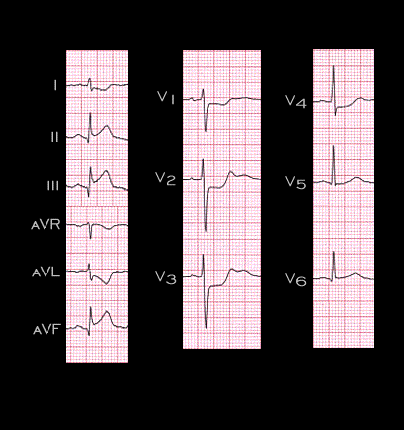
This ECG shows changes of an acute inferior wall infarction with involvement of the posterior, or postero-lateral wall. The inferior wall infarction is announced by the ST segment elevation in leads II, III and aVF, while the depression of the ST segment in leads V1, V2 and V3 reflects the posterior wall involvement. The slight ST elevation in V6 could indicate lateral wall involvement. In addition, the greater ST elevation in lead III than in lead II, coupled with the ST segment depression in leads I and aVL, as well as in leads V4 and V5 suggests that the culprit lesion is in the right coronary artery and raises the possibility of right ventricular involvement.
